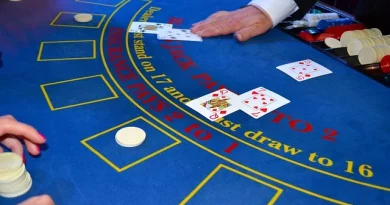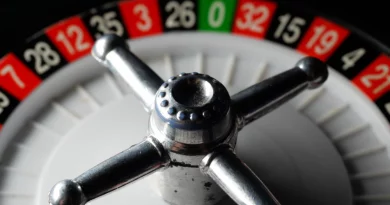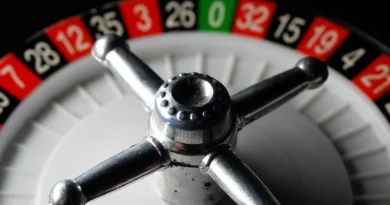How to play small and micro stakes in poker
Poker is a popular card game that can be played at different stakes levels, from small stakes to high stakes. Small stakes and micro stakes refer to the lower end of the betting spectrum, where the buy-ins and bets are relatively small compared to high-stakes games. In this article, we’ll discuss how to play small and micro stakes in poker, including strategies and tips for success.
Understanding the Opponents and their mindset
When it comes to playing small and micro stakes in poker, one of the key things to understand is the mindset and approach of the average player at these stakes. In general, players at small and micro stakes tend to be less experienced and less skilled than those at higher stakes. They may also be less comfortable with risk and more focused on not losing money than on maximizing their winnings.
Playing Tight and Aggressive
A key strategy for success at small and micro stakes is to play tight and aggressive. This means only playing hands that have a high chance of winning, and betting aggressively when you do play to build pots and take advantage of the loose play of your opponents. Check whether angle shooters pose a threat to your strategy.
Table Selection and Position
Another important strategy is to focus on table selection. Look for tables with players who are less experienced or less skilled than you. Avoid tables with tight, aggressive players, as they will be more difficult to win against. Playing position is also crucial when it comes to small and micro stakes. Position refers to the order in which you act during a hand. The later you act, the more information you have about what your opponents have done before you. Playing tight and aggressively from a late position can be more profitable than from an early position.
Bankroll Management
Bankroll management is essential to be successful in small and micro-stakes games. At small and micro stakes, the financial risks may be lower, but it is still important to manage your bankroll effectively. This means setting strict limits on the amount you are willing to lose in a single session or over a certain period. It also means not playing in games where the stakes are higher than your bankroll can handle.
Constantly Analyzing and Improving
Finally, it’s important to be constantly analyzing your play and learning from your mistakes. Pay attention to your wins and losses, and identify patterns in your play that led to those results. Use this information to adjust your strategy and improve your overall performance.
Overall, playing small and micro stakes in poker can be a great way to learn the game and improve your skills, but it’s important to have the right approach and strategies to be successful. By understanding the mindset of the average player at these stakes, using tight and aggressive play, focusing on table selection and position, managing bankroll and constantly analyzing and learning from your play, you can increase your chances of success.
Specialized Micro Stakes Poker Strategy
In addition to the general strategies mentioned above, there are also specialized strategies that can be effective in micro-stakes games. One example is the “short stack strategy,” which is designed for players with smaller bankrolls. This strategy involves playing a tighter range of hands and using the smaller stack to your advantage by applying pressure on larger stacks.
Another strategy that can be effective in micro-stakes games is to exploit the looseness of many micro-stakes players by calling their raises with a wider range of hands than you might normally play. This can be especially profitable when you have a position on the raiser, as you will have more information about their hand strength and betting patterns.
Another important strategy is to be aware of and adapt to the specific characteristics of the table and the players you are playing against. A table with many recreational players, for instance, may have a very different dynamic than one with mostly experienced players, and you need to adapt your strategy accordingly.
Specialized Small Stakes Poker Strategy
In small-stakes games, players are usually more skilled and aggressive than in micro-games, and exploiting them can be harder. In small-stakes games, the players will more often be tight-aggressive, and this can make it difficult to build pots and make big bluffs.
A successful strategy in small-stakes games is to be selective about the hands you play and be patient. Playing tight and aggressive and waiting for the right opportunity to strike, such as when a recreational player makes a mistake, is key.
Another important strategy to consider is three-betting, which is the act of re-raising after the initial raise. This strategy is particularly useful against tight players who raise frequently, as it puts them in a difficult spot and allows you to gain the upper hand in the hand.
It is also important to be aware of and adapt to the specific characteristics of the table and players you are playing against, just like in micro stakes. Try to identify patterns and tendencies of other players and adjust your strategy accordingly.
Conclusion
Small and micro-stakes poker games can be a great way to learn and improve your poker skills while also providing a fun and exciting gaming experience. By understanding the basics of poker strategy, paying close attention to your opponents, and exploiting any weaknesses you observe, you can be successful in these games. Additionally, by understanding the specialized strategies for both small and micro stakes, you can increase your chances of success even more.
It is essential to constantly learn, analyze, and improve to be successful in any type of poker stakes, and small and micro-stakes games are no exception. A solid understanding of the game, your opponents, and bankroll management, as well as adaptation to different situations, can help increase your chances of winning.
FAQ
Small and micro stakes in poker refer to games where the buy-ins and bets are relatively small compared to high-stakes games. This is an excellent starting point for beginners or players who want to improve their skills without risking too much money.
Typically, players at small and micro stakes tend to be less experienced and less skilled than those at higher stakes. They are less comfortable with risk, and their focus might be more on not losing money than on maximizing their winnings.
A key strategy is to play tight and aggressive. This implies only playing hands likely to win and betting aggressively when you do play. It’s also valuable to understand the opponent’s mindset and use that to your advantage.
Even though the financial risks may be lower at these stakes, it is still crucial to manage your bankroll effectively. This implies setting strict limits on potential losses and ensuring the stakes of the game suit your bankroll.




